A meeting place for Latin America’s pig industry
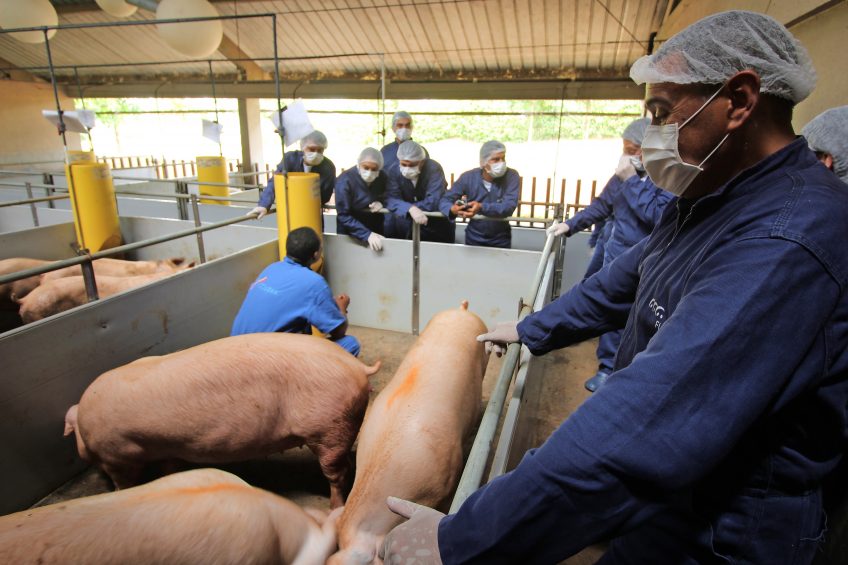
For about 2 years, pig professionals from all over Latin America have found their way to the city of Villavicencio, close to the Andes mountain range, in the heart of Colombia. A model and training farm was set up to inspire Latin America’s pig producers on-site with the latest ideas.
“Please, when crossing the sow path, remember not to wear your white shoes, OK?” says Mr Edgar Villamizar, age 52, who is talking to a group of leading Colombian pig experts, while pointing to a track leading from one farm building to the other, flanked on both sides with many firm metal poles.
Does that advice sound unintelligible? In fact, it’s as logical as it can be. The HoCoTec farm near Villavicencio in Colombia’s Meta department applies very strict external and internal biosecurity rules. Strictly followed colour codes help producers to remember this at all times. A blue colour is for the gestation barn, green for lactation, yellow for weaners and red for finishers. In addition, there is grey for ‘the outer biosecurity ring’ within the farm’s premises, which is entered after taking a shower. Finally, in between the farm buildings, white shoes are required.
It’s impossible to be mistaken – all tools, from pens to ventilation curtains, come in similar colours. As a result, a visit to the farm comes with regularly changing attire, from coverall to shoes, every time a new building is entered. At 30°C and a 85% humidity, this is not an easy task, but all visitors are constantly reminded to think about where they are and what they should and should not do.
Biosecurity
All this is for a very good reason. One can’t go on about promoting and propagating biosecurity issues but not live by the book yourself. Mr Villamizar, general manager at HoCoTec, studied agriculture in the United States and the Netherlands and over the years became impressed by what modern thoughts on pig production can achieve. That means thinking differently about biosecurity, having animal welfare in mind when constructing the farm and applying different feeding strategies than most farms would in Colombia.
As a consultant and professional pig farm trainer, he had been visiting many farms for many years and given trainings at trade shows around Latin America. He had thus built of a large network of customers.

Yet, his real dream was to show how pig production can be done. Together with a good friend and long-standing business partner, the Dutch animal scientist and pig expert Luc Willekens (Nutrisuin.com), he started to think about what the ideal farm would look like as from 2010. Their joint efforts and investments led to the first Camborough sows (PIC) walking into the facility in December 2014.
“It took a long time,” Mr Villamizar explains. “Initially, we tried to go for a place closer to Bogotá, but that took too long because of local planning procedures. Instead we found this stretch of land in Meta at 126 km from Bogotá. We can operate at liberty here, we don’t have neighbours, and there are good sanitary conditions.”
Here he says something which is very true: it takes, for instance, a long drive down a bumpy, sandy road to reach the farm’s gates.

Pig Progress regularly goes on-farm in leading swine production sites across the globe. Go to our interactive Farm Visit map to see where we have been and read all about our visits…
International presence
The Holland-Colombia-Technology (HoCoTec) facility in fact has 3 purposes:
- being a commercial production site,
- showing new developments and thirdly,
- training people.
All 3 purposes are clearly visible on the farm, which has now been in existence for 2 years and attracted professionals from countries all over the Latin American world, e.g. Brazil, Mexico, Ecuador and of course Colombia. Each delegation is different – this can be farm staff, but also professors or management level visitors. Mr Villamizar says, “We adjust the programme to the groups that visit us – they are tailor-made.”
He uses a Spanish word for it, inmersión, meaning an intensive deep-dive of several days. The visitors, in groups of 15 maximum, usually attend presentations in one of the 10 classrooms spread out over the complex. In addition, they often go into the farmhouses to see and observe what is being done – often this is substantially different to what is common in Colombia and its surrounding countries. Mr Villamizar explains, “It’s science applied. We encourage the discussion, we like it when people ask questions. After the inmersión we invite the students to criticise the bad things we do. And we ask whether the students thought what they had learnt was helpful.” Grinning he states: “We once had a CEO who said that he had already phoned home. He said he had started to do it since the Wednesday during the course.”

An inmersión thus gets the character of team building, Mr Villamizar explains. Upon arrival, visitors will have to take a shower at the gate and then dress in a fresh, white HoCoTec outfit. Next, they are treated with a nice open-air lunch, which is prepared on the spot. It’s that mixture of on one hand being all equal – from worker to professor – and on the other hand being treated well as VIPs, thus a sense of pride is created for the job people are doing. The ‘students’ usually tend to socialise quickly.
For a long time, people in Colombia’s pig industry have not felt that highly valued, Mr Villamizar adds. “In the past, the cattle business was professional, the poultry business was professional, but pigs – no. Now that is changing a bit.”
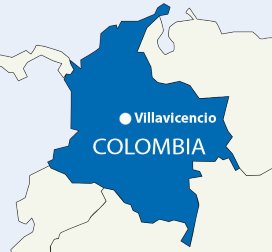
HoCoTec Farm, Villavicencio, Colombia
HoCoTec Farm is located on a 22-hectare stretch of land, roughly 40km from the city of Villavicencio in Colombia’s Meta department. At the time of the visit, in mid 2017 the farm had 250 sows, and a capacity for 900 weaners and the finisher houses were being expanded. The farm has plans to grow and vertically integrate. The majority of the weaners is sold to local producers at a weight of 32kg. The climate is humid and warm. Due to the farm’s location as well as high biosecurity, the farm does not vaccinate against PRRS, CSF, Aujeszky’s Disease or App. Manure is stored and separated on-site into a solid fraction (crops) and a liquid fraction (to make the grass of neighbouring cattle farmers grow). HoCoTec roughly employs ten staff, including administration and groundsmen. In total, 6 teachers are involved in training.
No coincidence
The growing self-confidence of Colombia’s pig industry is related to a recent spell of peace and development in the country. In the last decades of the 20th century, the country often made international headlines with regard to drug wars and for a long time, especially in the countryside, the presence of the Revolutionary Armed Forces of Colombia (FARC) kept the country in armed conflict. The FARC’s dark shadow, however, has gradually disappeared over the last 15 years, leading to a peace treaty and a complete disarming at the end of 2016. As a result of this growing sense of stability, it has become increasingly interesting to invest in agriculture over the recent years, explains Mr Villamizar.

Add to this a growing middle-class population with a growing demand for affordable meat products. Pork forms a good alternative to the more expensive beef meat, although being a local delicacy.
Thirdly, Mr Villamizar mentions, Colombia simply has it all. “We have space, we have land, we have water. These are scarce elsewhere.”
Farm set-up
The 250-sow farrow-to-finish farm HoCoTec comes with a lot of approaches and techniques that are derived from modern techniques in Europe. In the gestation house (blue), for instance, sows are sent into stable group housing with free access stalls – a development which isn’t very common in Colombia as yet, Mr Villamizar explains. The advantages of the system (sows getting more exercise, being calmer and getting through parturition easier) are clear to him and he’s proud to be able to share these ideas. For ventilation purposes, there is a gap between both sides of the roof running along the entire length of the roof. This creates a nice air flow which will cool the sows down. This facility also houses a few mostly PIC408 Piétrain boars for insemination and detection purposes. The boars get a lot of attention and all have been named after popes, their pens equipped with signs like ‘Francesco’, ‘Pio’ or ‘Benedicto’. Replacement gilts can also be found here. Light emitting balloons are fixed against the ceiling of the gilts’ facility, to make sure that they get 16 hours of light for fertility reasons.

The lactation house (green) has farrowing pens with additional creep spaces for welfare purposes on the aisle side. At this farm, the system doesn’t match that well, admits Mr Villamizar. He says, “The sows often like to drink a lot with this weather and will spill quite some water into these boxes. In addition, sometimes it can rain literally horizontally and it may enter the buildings. Then these creep boxes are usually the first to get wet. If there’s one type of pig you don’t want to get wet it is newborn piglets.” Worth mentioning: male piglets are not castrated, but immunovaccination is used, a practice which is fairly common in Colombia. Interestingly, the sow’s snouts are being kept cool using nose ventilation coming from under the ground. In the heat, even the piglets like this as they often huddle around the sow trough.
The weaner house (yellow) consists of 7 rooms for 150 weaned pigs, which are being kept there from weaning at 28 days until they weigh about 32 kg each and 70 days of age. As one of these rooms will always be empty for cleaning and disinfection purposes, at any given time there will be some 900 weaner pigs on the farm.
The finisher house (red) has a similar roof structure as the gestation barn, as all finishers are kept in large rooms. At the time of the visit, 2 sections were ready. The finishers will be sent for slaughter when they are around 120 kg.
- The facility also comes with a small bodega (feed house), where once every 3 weeks a truck brings bags of feed. This truck arrives at the farm using a different entrance and the feed is being passed through a sluice, which is mainly distributed by hand. All diets are made according to an own formula inspired by Dutch nutrition insights, based on soy, maize and sorghum; the sows and finishers also receive palm kernel cake. The feed is produced by Colombian feed producer CIPA.
- A 9 m tall water tank is built where the farm ends and the forest begins. This is where nearby river water gets filtrated and treated before it can be drunk by pigs.
- An on-site separate toilet facility was built on top of the underground manure channel, thus all human and pig faeces end up in the same place.

Grounds
Worth mentioning are the grounds where the farm is being laid out and for which HoCoTec employs various groundsmen. Each tree is placed there for a reason. Surrounding the gestation and lactation barns, for instance, are a lot of pomarroso (rose apple) trees. Once fully grown, they will provide constant shade against the sun.
Spread out over the farm – and in increasing amounts around the manure pit, are nice-smelling flowers like e.g. gardenias and plumerias, to compensate for the pig smell. “It’s not because there are any neighbours that might complain,” Mr Villamizar explains. “Rather it is related to the visitors and farm staff. We would like them to feel good.”
Included as part of the biosecurity fence is a hedge with nasty thorns. From a distance this looks like a neat border, but moving in closer, it’s clear that these thorns will also work to keep out especially larger animals from entering the farm’s premises.

Future
Mr Villamizar has plenty of plans for short term and longer term developments. In the short term, the farm is tripling its size, with commencement of construction by September 2017. Sow numbers will go up 700, and also the finisher section will get an extra boost with the construction of three additional buildings, giving a total of 7,000 finishing places. That will mean that none of the animals will have to be sold after weaning.
HoCoTec will thus set up a vertically integrated business controlling the entire chain – first steps will be to build an own slaughter and meat processing plant, situated 28 km from the farm, by September 2017. 2 cold distribution centres will be included, 1 at Bogotá and 1 at Cartagena. Currently all the pigs have to be transported for 6 hours to a slaughterplant in Cundinamarca department which leads to stress and weight loss.

For the longer term, Mr Villamizar hopes to complete a ‘Pig Marriott’, with on-site guest rooms for pig professionals as well as a leisure facility and a residence. Currently, students and other visitors stay in nearby hotels.
Speaking of which, the pig experts that gathered in HoCoTec at the time of the visit were doing their inmersión to do brainstorming about how to teach better, how to improve communication in pig production. The initial message on the white shoes is accepted without any hesitation. They understand it’s green shoes that should be worn if they wanted to pass through. All nod and promise to take a detour – or if possible, take off their shoes and jump over the path.
 Beheer
Beheer

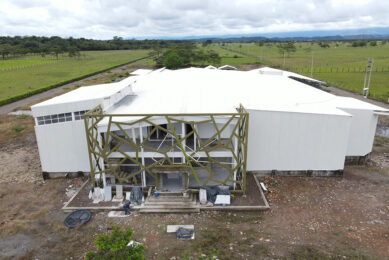
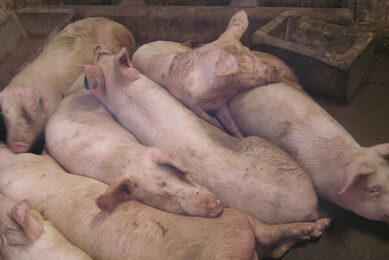
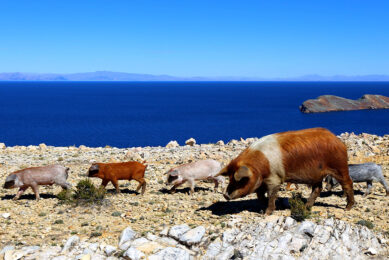
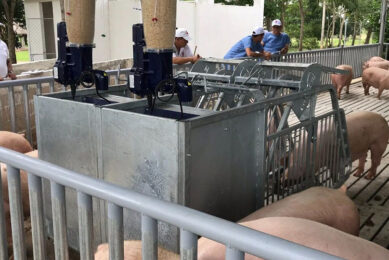



 WP Admin
WP Admin  Bewerk bericht
Bewerk bericht